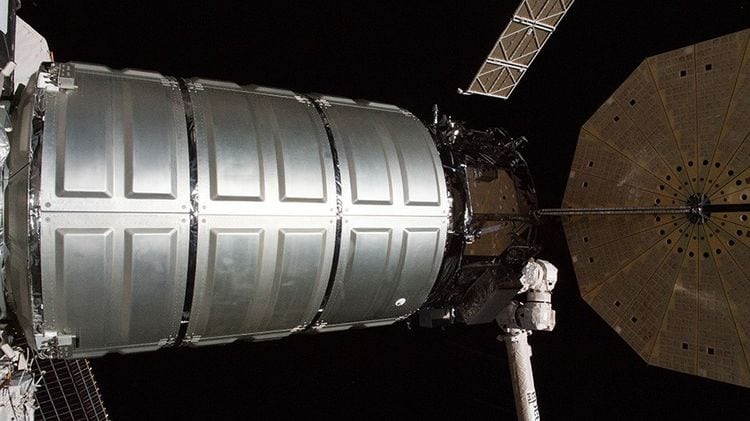Latest News

The Cygnus resupply ship with its round, brass-colored UltraFlex solar arrays is guided to its port on the Unity module shortly after it was captured with the Canadarm2 robotic arm(Credit: NASA)
Northrop Grumman launched its Cygnus spacecraft aboard an Antares rocket on Monday, which headed toward the International Space Station (ISS). Upon leaving the ISS, the spacecraft deployed six cube satellites from the attached Nanoracks deployer before performing a safe and destructive reentry into Earth’s atmosphere over the Pacific Ocean.
This mission marks the company’s ninth cargo delivery to the orbiting laboratory. Cargo delivery and trash removal is a routine function for the Cygnus’ cargo module.
In preparation for future crewed trips to deep space, Northrop Grumman began the process of evolving Cygnus beyond Low Earth Orbit (LEO) with the completion of Next Space Technologies for Exploration Partnerships (NextSTEP) Phase 1. For this initiative, NASA asked companies to conduct concept studies and explore technology needed for deep space exploration. To help achieve this goal, Northrop Grumman is focusing on Cygnus’ functional versatility. NextSTEP Phase 2 is now underway, and the company is maturing the technology and design to construct on-ground simulators of a deep space habitat.
Get the latest Via Satellite news!
Subscribe Now